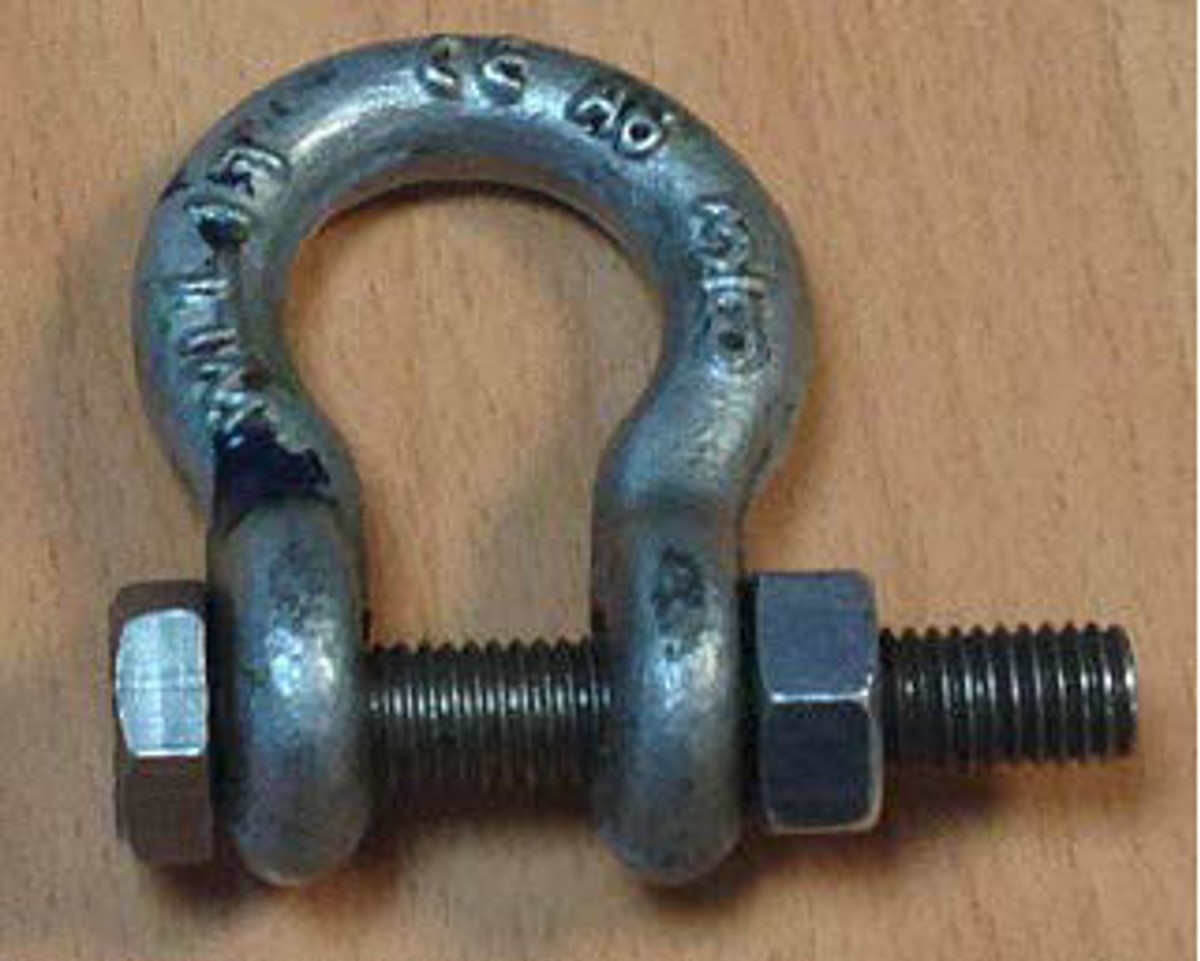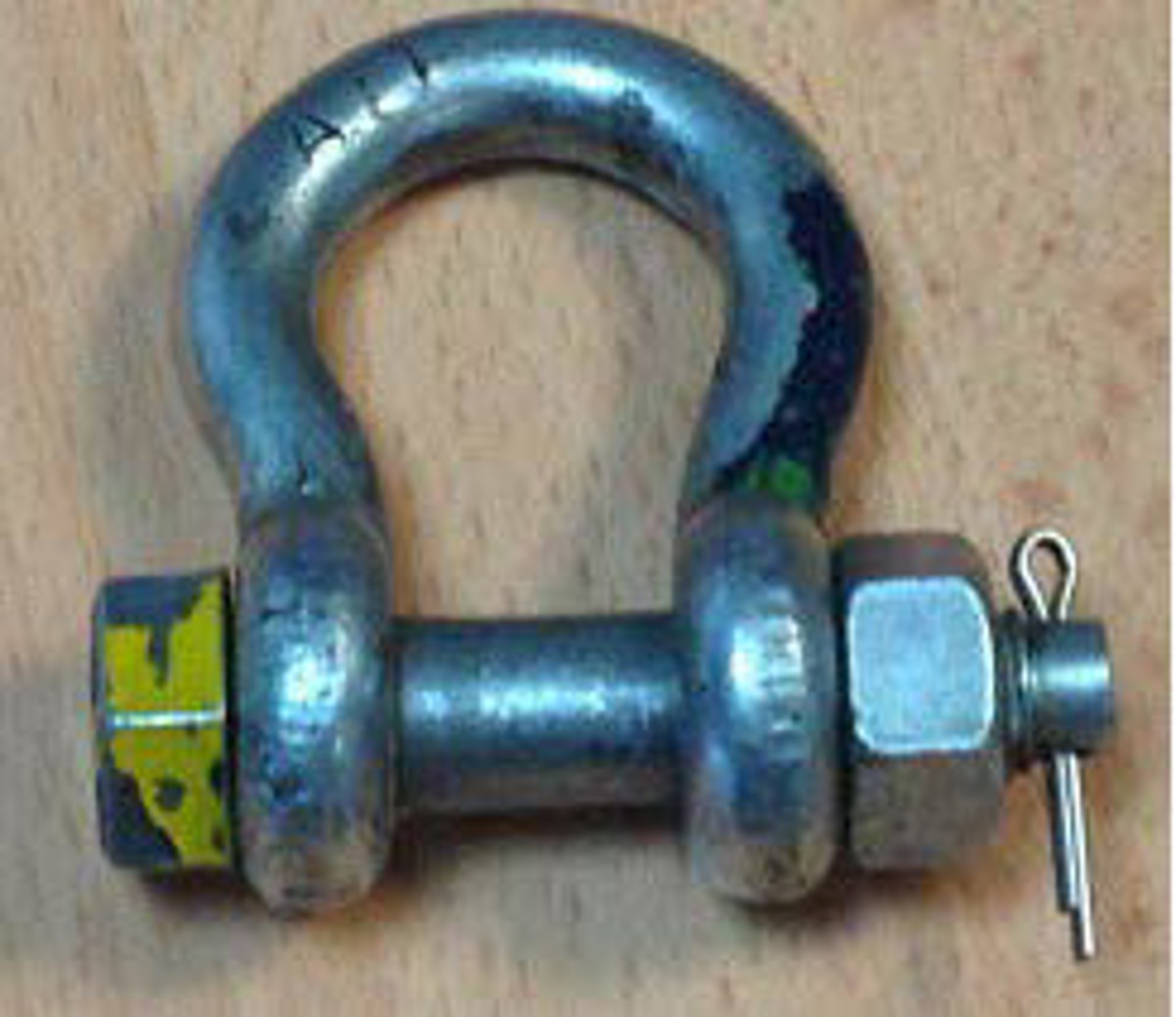High potential dropped object – steel bar, 10 m
- Safety Flash
- Published on 18 January 2013
- Generated on 1 January 2026
- IMCA SF 01/13
- 2 minute read
Jump to:
A Member has reported finding shackles used for lifting equipment in an unsafe condition
What happened?
A third-party lifting inspector was re-certifying lifting equipment when a 1 ton lifting shackle was discovered which had lost its pin, and the missing pin had been replaced with a standard bolt and nut which was not certified for lifting operations.
Additionally, the shackle was found to be pinched due to excessive pressure being applied when tightening the nut due to the bolt having thread along its entire length. It was not clear whether or not this shackle had been used for lifting but the potential for injury to personnel or damage to assets was high.

non-compliant shackle with nut and bolt (note shackle lugs pinched)

shackle with correct configuration and split pin (but colour code unclear)
Lessons learnt
The following lessons were learnt:
- Lifting equipment should be fit for purpose and certified by a competent authority for use.
- Replacement or repair of lifting equipment invalidates the certification.
- Lifting equipment should be reviewed regularly for non-compliance and any non-compliant items taken out of service.
- Where damage is evident or pins/bolts are missing, the equipment should be removed from service and either destroyed or new parts ordered.
- If new parts are ordered, the lifting equipment should be re-tested with a certificate issued prior to return to service.
- Lifting equipment should follow the current colour coding.
- Lifting equipment colour codes should be well communicated and displayed.
- Identifying and reporting faults in lifting equipment is a regulatory requirement in many places and should be seen as a first line of defence.
Members may also refer to IMCA LR006 - Guidelines for lifting operations.
IMCA Safety Flashes summarise key safety matters and incidents, allowing lessons to be more easily learnt for the benefit of the entire offshore industry.
The effectiveness of the IMCA Safety Flash system depends on the industry sharing information and so avoiding repeat incidents. Incidents are classified according to IOGP's Life Saving Rules.
All information is anonymised or sanitised, as appropriate, and warnings for graphic content included where possible.
IMCA makes every effort to ensure both the accuracy and reliability of the information shared, but is not be liable for any guidance and/or recommendation and/or statement herein contained.
The information contained in this document does not fulfil or replace any individual's or Member's legal, regulatory or other duties or obligations in respect of their operations. Individuals and Members remain solely responsible for the safe, lawful and proper conduct of their operations.
Share your safety incidents with IMCA online. Sign-up to receive Safety Flashes straight to your email.